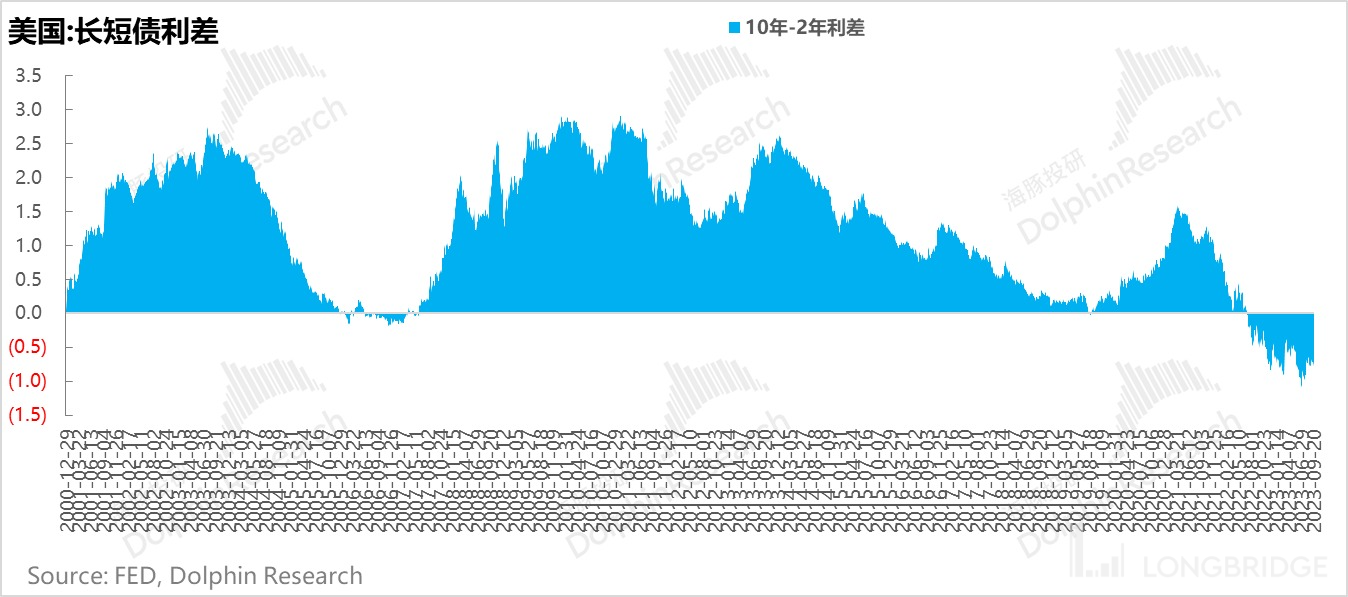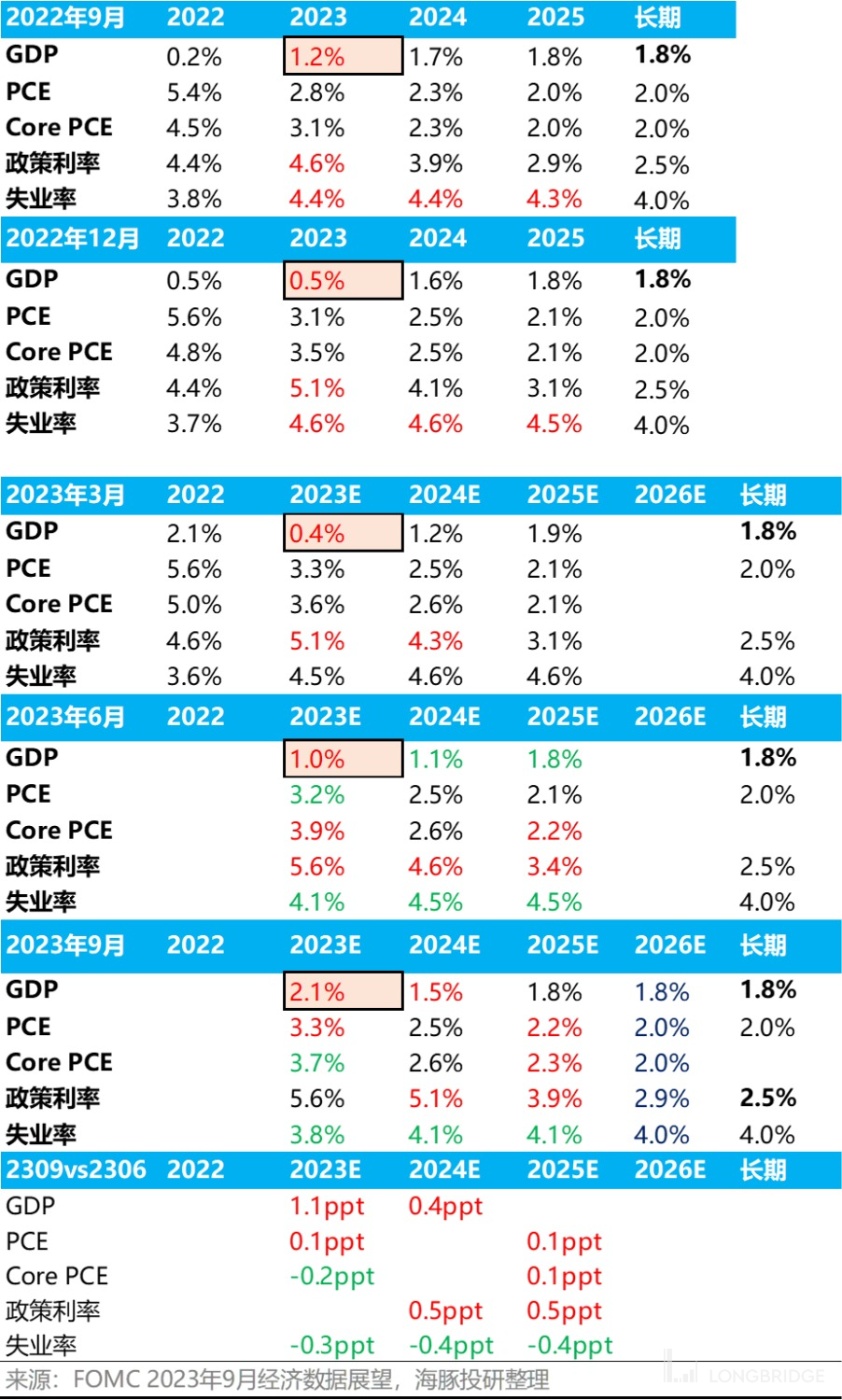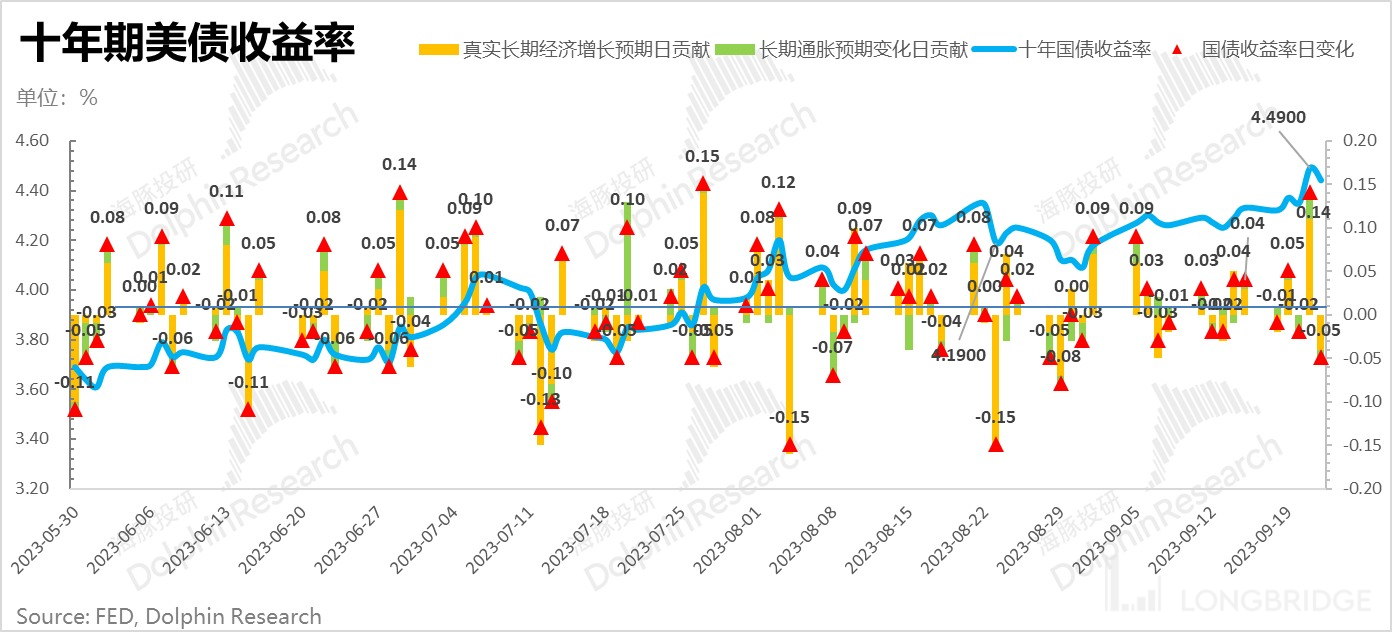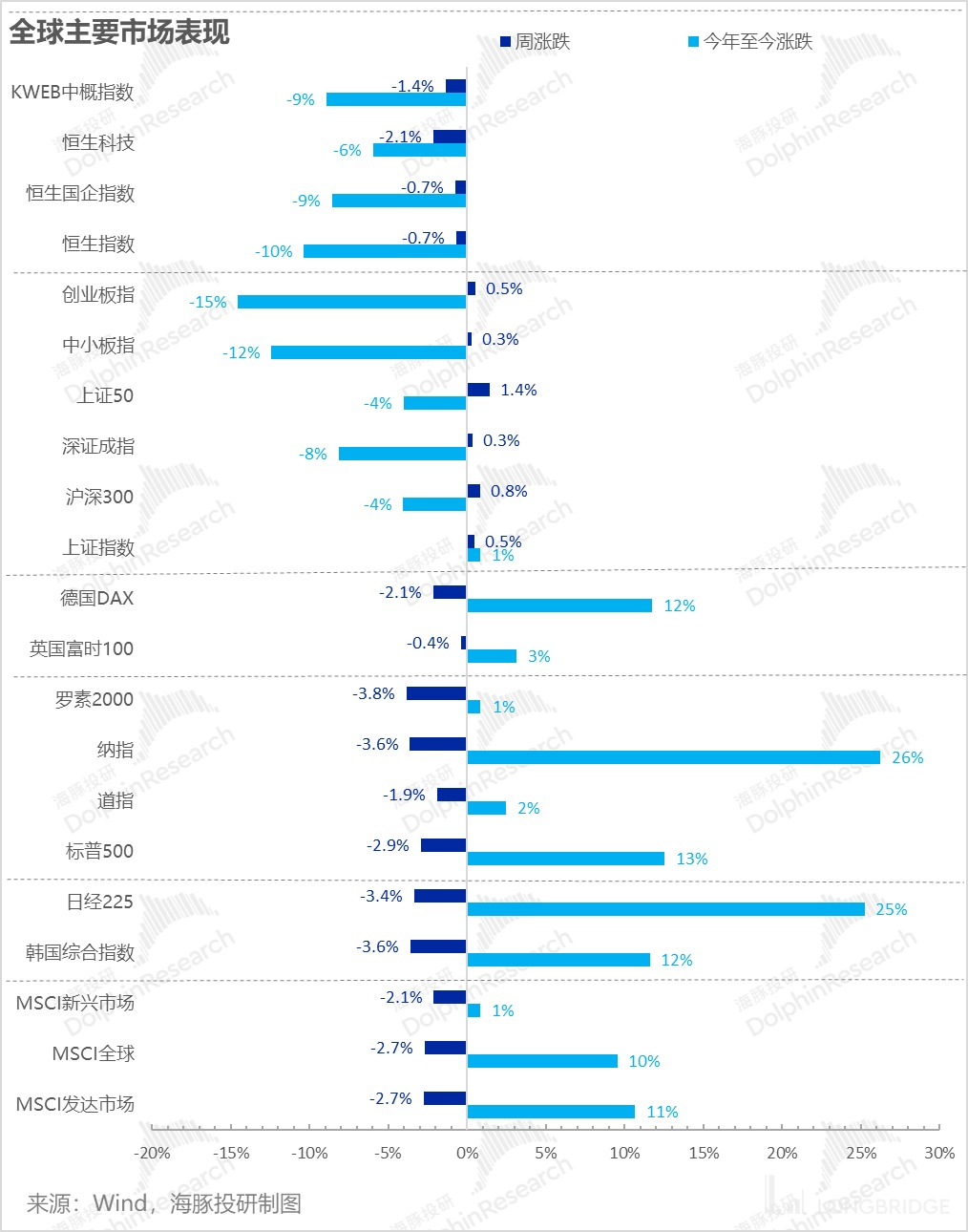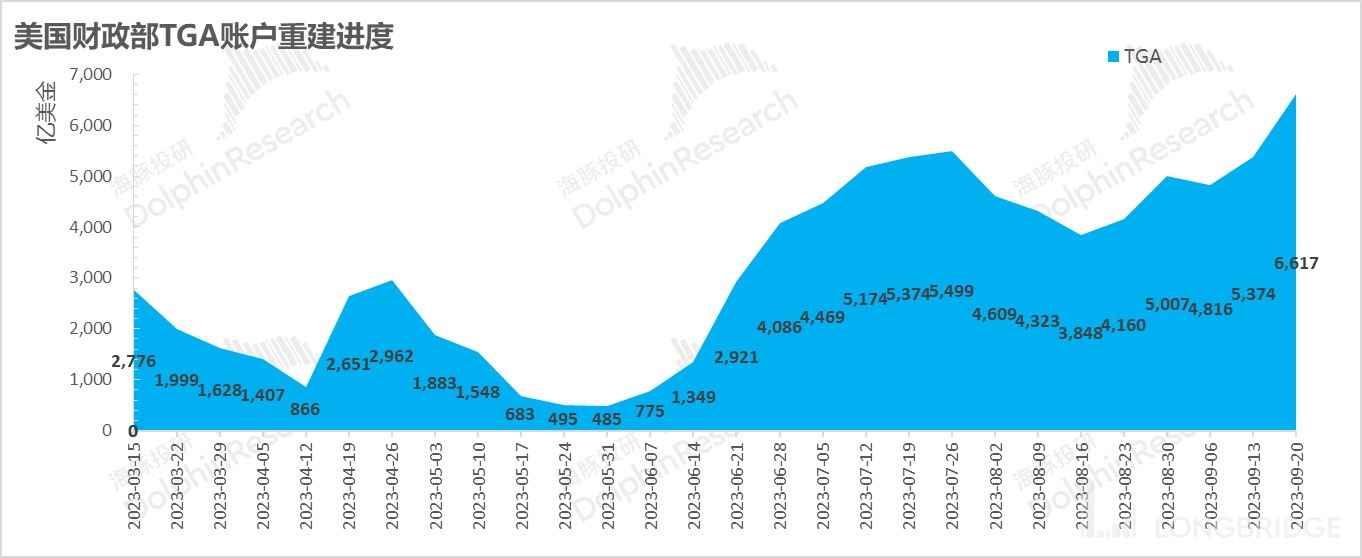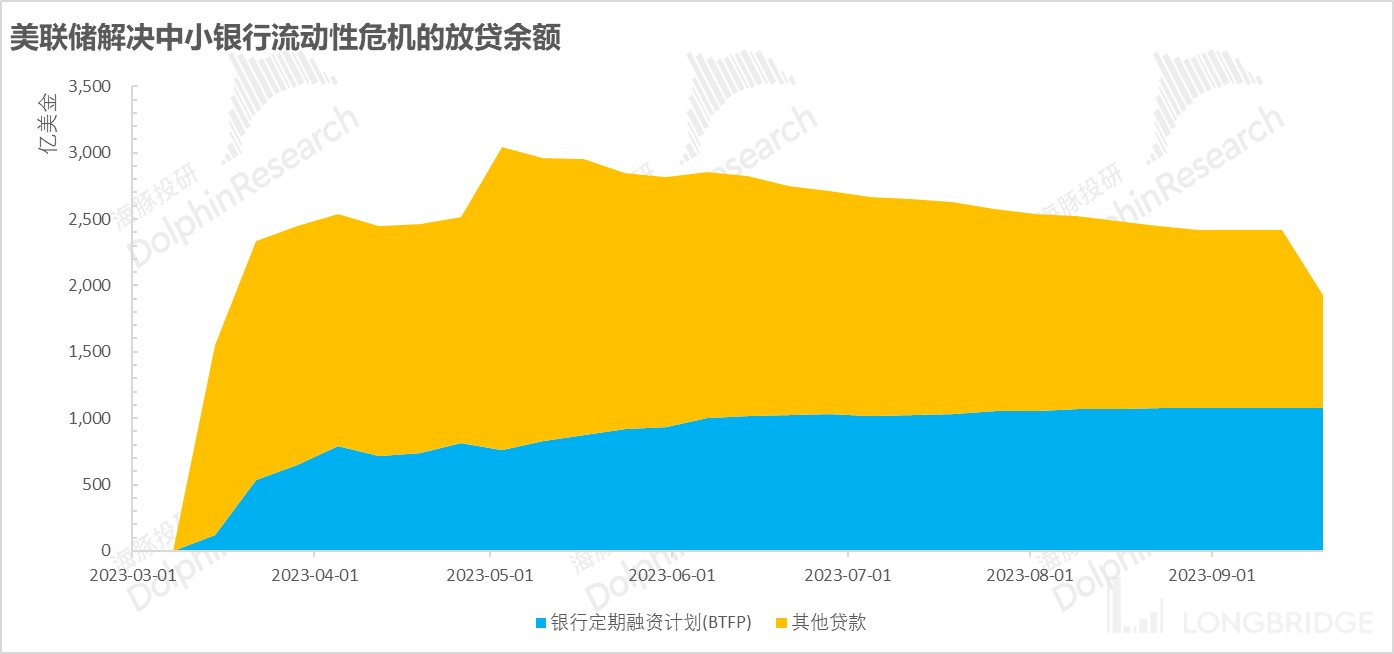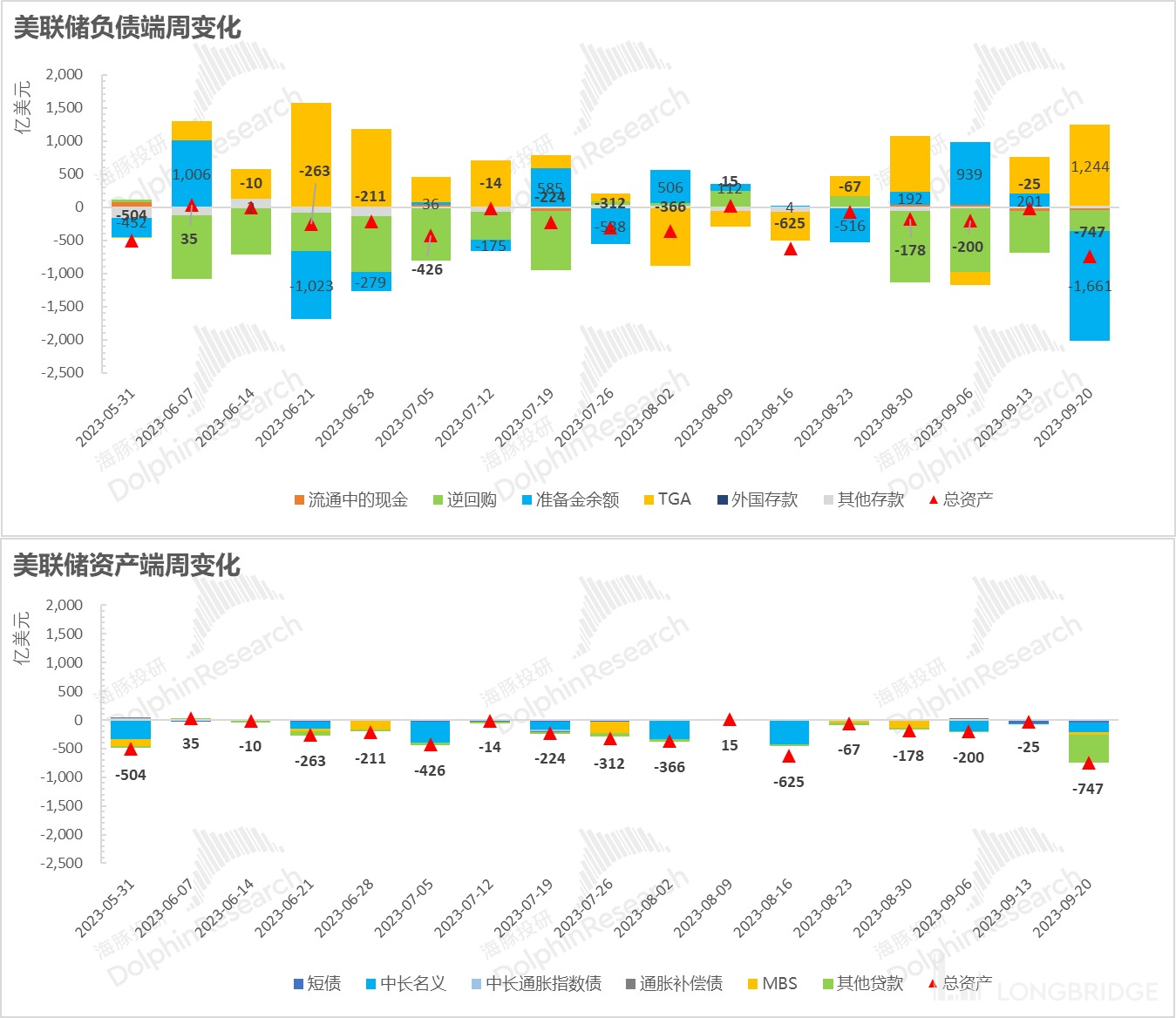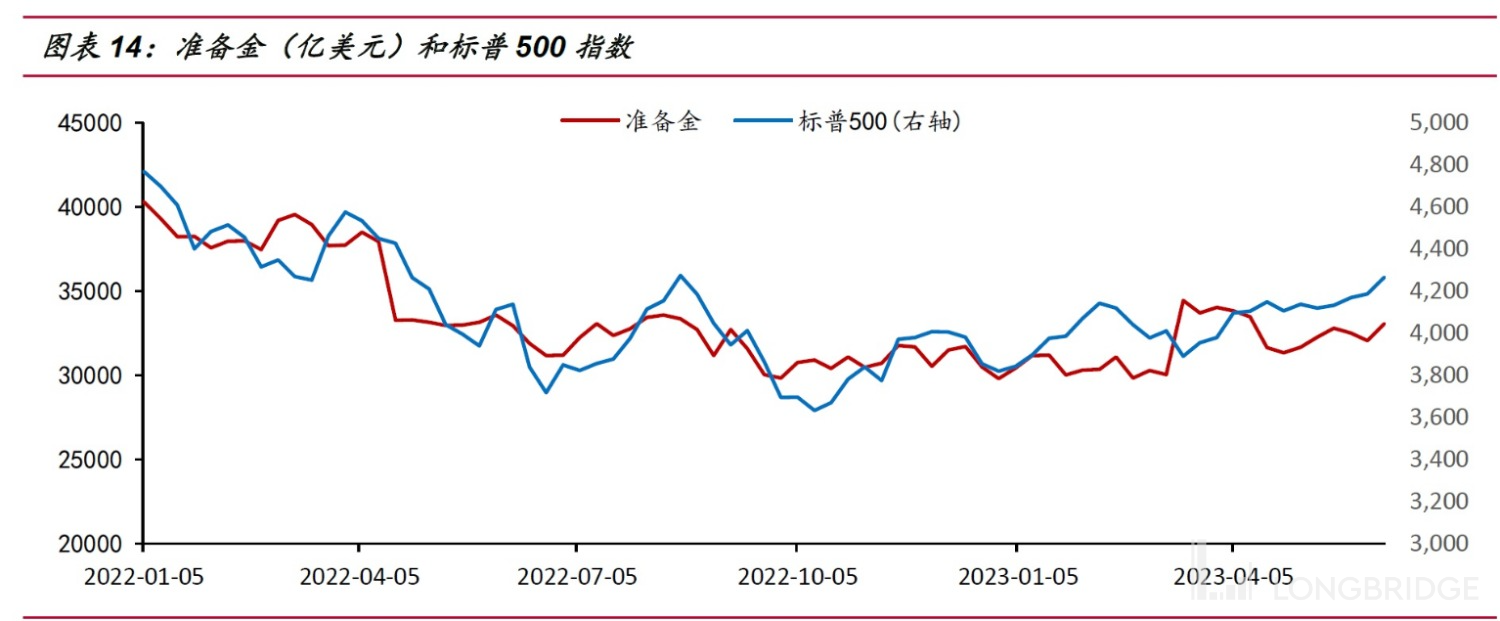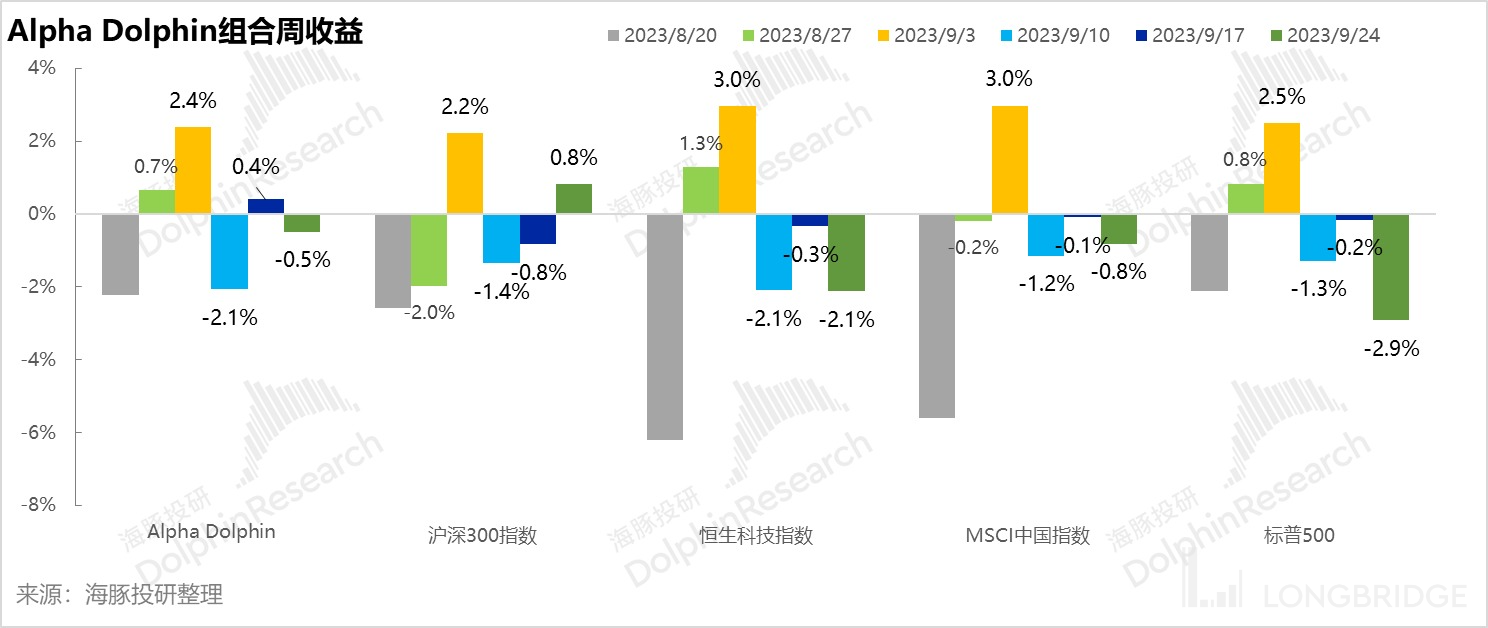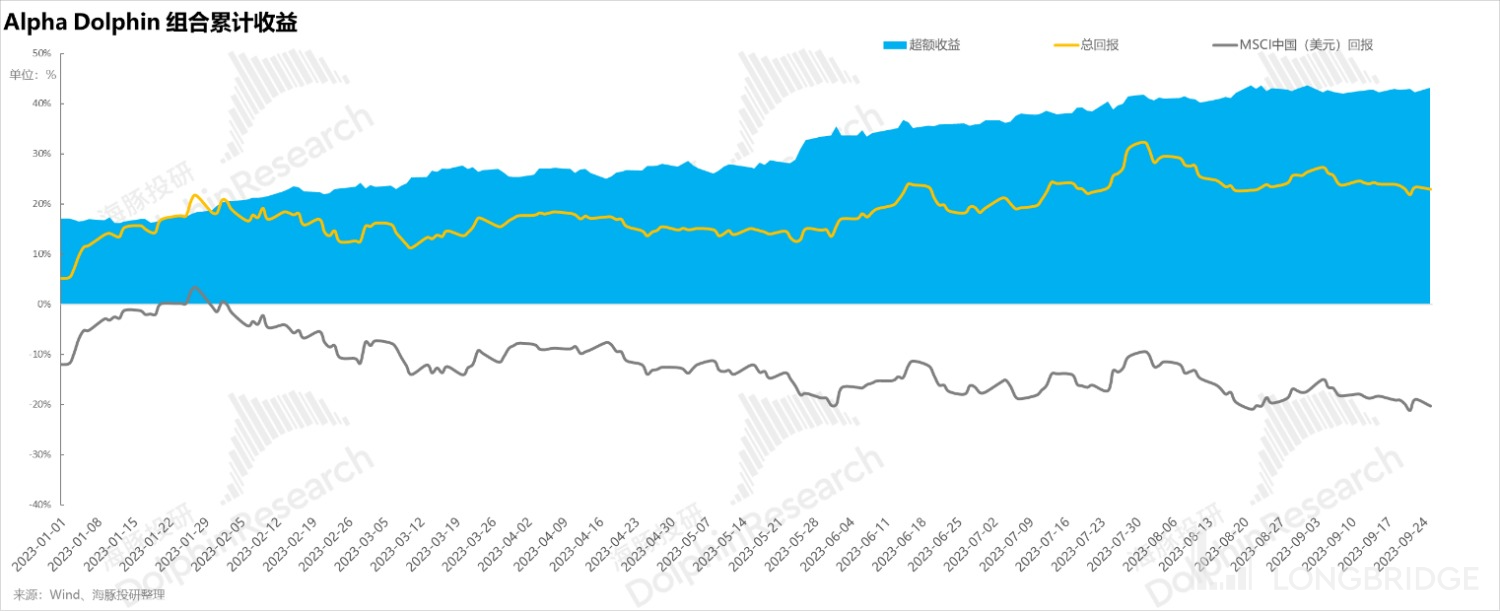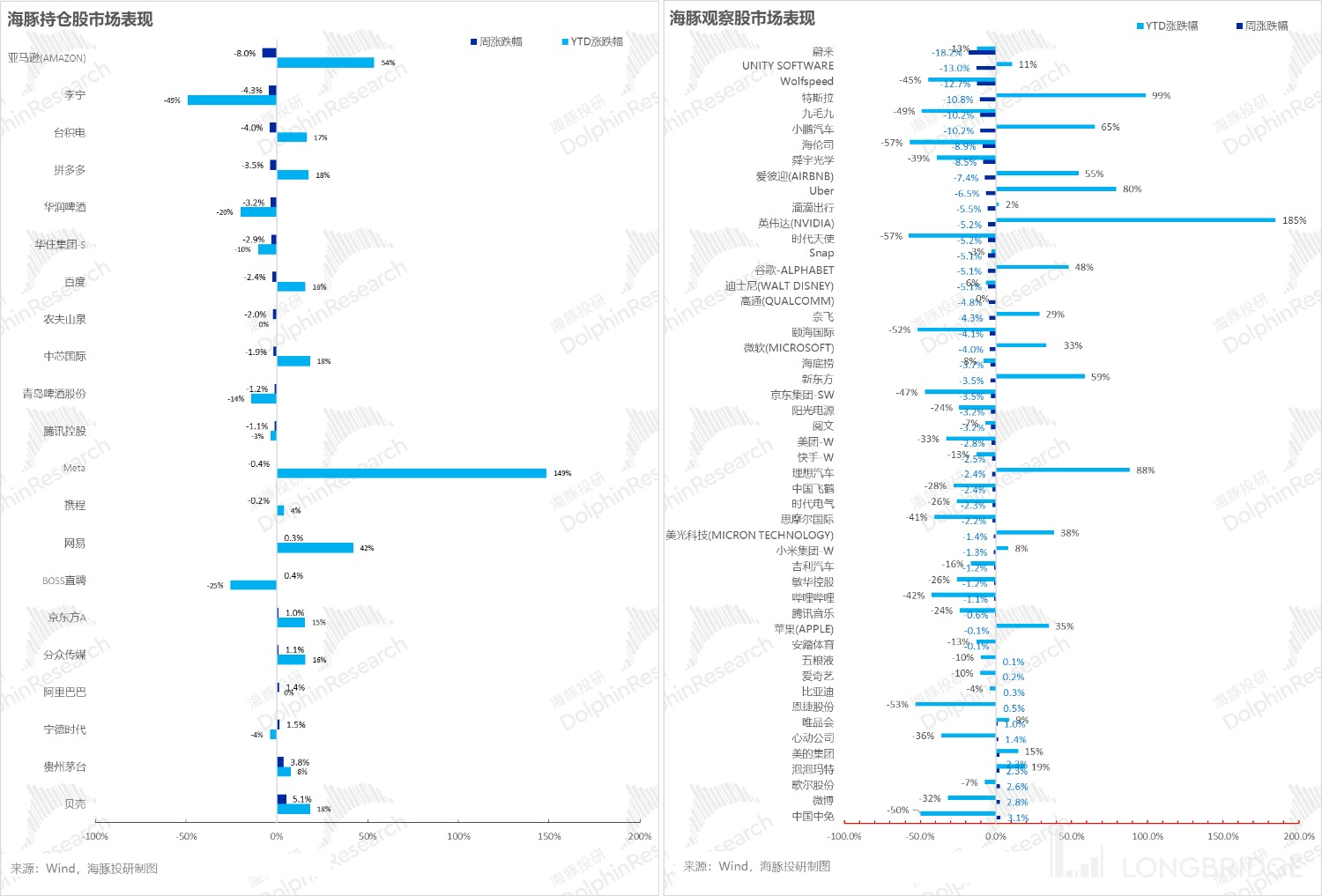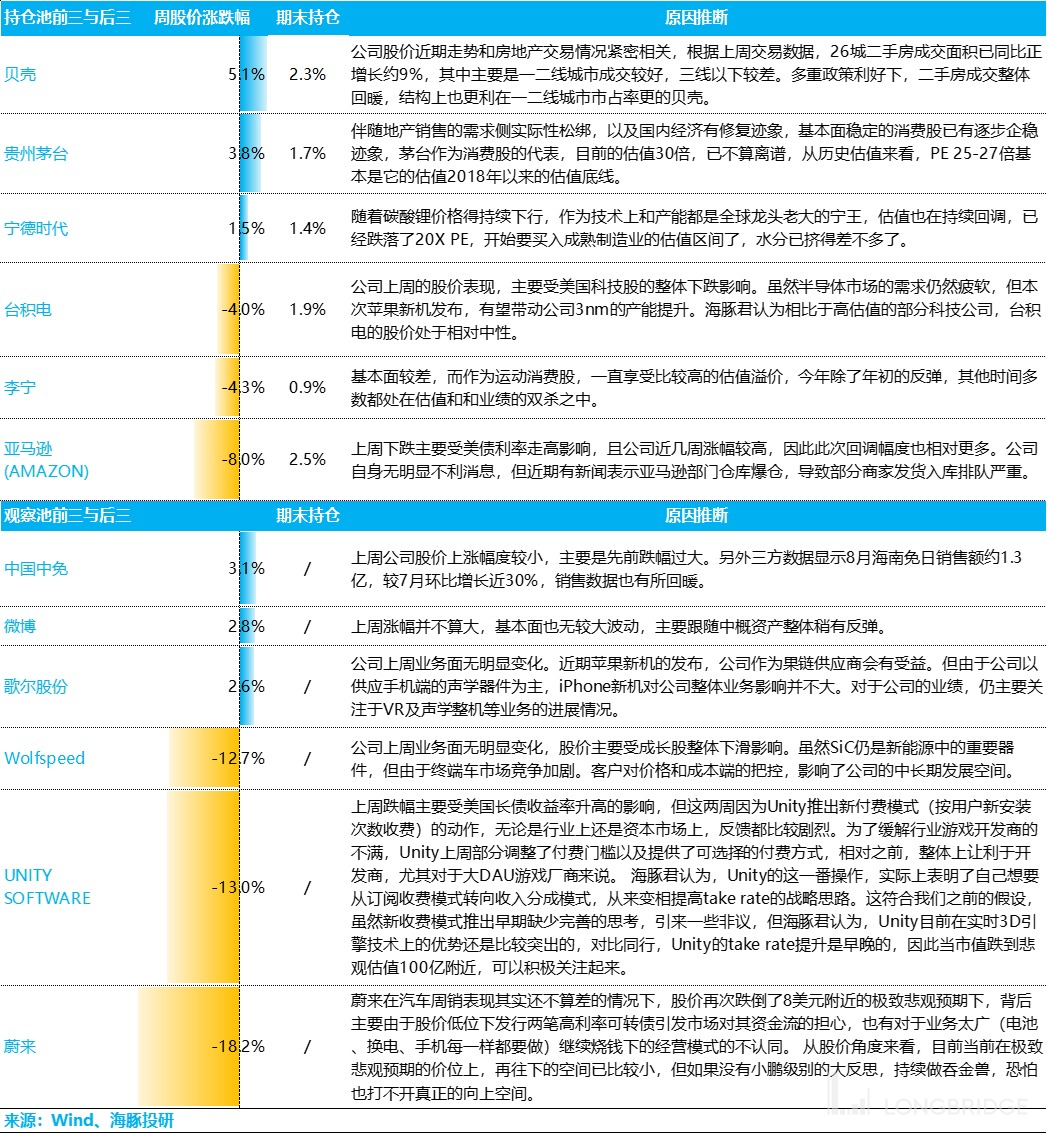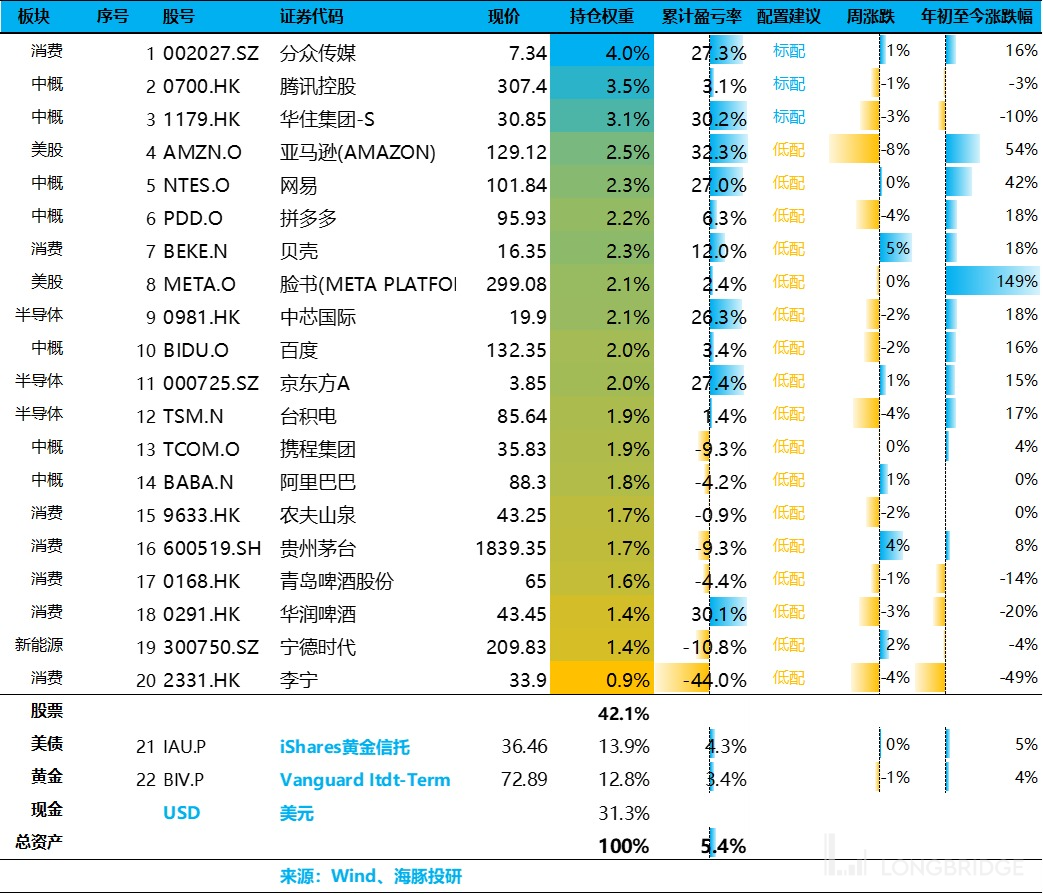Is the US stock market unable to withstand the impact of the Federal Reserve's hammer blow?
Hello everyone, here is the Dolphin Research's summary of the core information on this week's portfolio strategy:
-
Last week, in addition to the "hawkish" expectation of the Federal Reserve's "Higher for Longer" interest rate policy, the real pressure came from the first encounter with a risk-free interest rate of 4.5% since 2007.
-
There is a big logic behind this narrative: for example, the re-industrialization under the expansionary fiscal policy, the long-term inflation expectations brought about by global decoupling, the increase in long-term potential economic growth rate, and the upward shift in the neutral interest rate. However, behind this logic, there are still short-term trends that are evident but difficult to prove, and long-term trends that remain unclear.
-
The real plunge last week was not only due to the hawkish remarks on price tools by the Federal Reserve, but also the heavy blow from quantity tools and the coordination of fiscal reservoirs. From the data, it can be seen that the fiscal policy has increased its borrowing efforts, the TGA has been rapidly rebuilt, the liquidity crisis loan tools of small and medium-sized banks have concentrated maturities, and the continuous selling of US bonds by the Federal Reserve has led to concentrated liquidity drainage.
It continues to validate Dolphin Research's latest macro-depth review, "The 'Brotherhood' Behind NVIDIA and Tesla, Can It Continue in the Second Half of the Year?."
- Looking ahead to the rest of this year, although US stocks may rebound under the downward volatility of inflation and interest rate expectations, the TGA account still needs to be rebuilt to 750 billion by the end of December (still lacking hundreds of billions of US dollars), and the balance of liquidity crisis loan tools for small and medium-sized banks is still rapidly declining to 190 billion US dollars, which may mature one after another before March next year, along with the continuous selling of government bonds, liquidity pressure remains significant.
Here are the details:
I. The Logical Flaw in the Pricing of Perfect Landing
Whether it is a soft landing or a hard landing, there is a common point in the debate over the expected path of economic development this year, which is that long-term inflation and economic growth expectations are anchored at a level of 1-2% for long-term inflation and around 1-2% for long-term real GDP growth. Under such expectations, the yield of 10-year government bonds is basically around 2.5%.
And the pricing of major asset classes globally is also based on this general direction, so regardless of where short-term interest rates and short-term inflation are, interest rates are not a premium for maturity, but an inversion of maturity, with an inversion amplitude of more than 100 basis points at one point.
The core judgment here is that the current economy is overheating, and after this wave of tightening, when the economy cools down, the growth path will return to the historical norm of "low inflation, stable growth". The only question is whether the landing will be a "Feet Landing" or a "Face Landing".
 With the gradual evolution of economic data, the market is slowly eliminating the possibility of a Face Landing and moving away from the crisis in the mid-March small and medium-sized banking industry. Instead of deteriorating, the economic data is showing a marginal improvement trend. More and more people believe in a perfect landing with a gentle touch of the ground. Prior to the unexpected increase in financing plans by the Ministry of Finance in July, the market was immersed in the expectation of a Perfect Landing under the influence of "leaking inflation + strong economic data".
With the gradual evolution of economic data, the market is slowly eliminating the possibility of a Face Landing and moving away from the crisis in the mid-March small and medium-sized banking industry. Instead of deteriorating, the economic data is showing a marginal improvement trend. More and more people believe in a perfect landing with a gentle touch of the ground. Prior to the unexpected increase in financing plans by the Ministry of Finance in July, the market was immersed in the expectation of a Perfect Landing under the influence of "leaking inflation + strong economic data".
The result of such pricing is a decline in bond prices and an increase in equity assets, leading to a lower premium of equity assets relative to risk-free assets. Normally, either 1) equity assets consolidate while the yield of risk-free bonds declines, bringing the premium of equity assets back to normal; or 2) if there is no expectation of a decline in the yield of risk-free assets, equity assets need to decline significantly to reflect the reasonable premium of risk assets relative to risk-free assets.
After the Ministry of Finance released an enhanced version of the financing plan, the market remained in a phase of consolidating equity assets and not seeing a decline in risk-free yields. However, as the 10-year government bond reached 4.5%, some people began to call for the 10-year government bond yield to stabilize above 4.5% and the 30-year government bond yield to stabilize above 5.5%.
This is also one of the reasons for the market's response to the updated economic outlook of the Federal Reserve last week, whether it is the recent economic growth estimate or the long-term outlook:
For example, Bill Ackman's core judgment that the 30-year government bond yield should reach 5.5% is based on the trend of deglobalization, where the long-term inflation center will certainly stabilize above 3%. Some people also believe that the consensus of "big finance" + deglobalization in post-pandemic capitalist countries will also raise the long-term economic growth rate. However, the ultimate result is that the yield of long-term risk-free assets will move up centrally, and 4.5% may become the new normal.
The answer to this question is extremely important. Once it is believed that the yield of long-term risk-free assets can reach 4.5%, equity assets must adjust downward according to the normal risk premium of equity assets to adapt to the next level of long-term economic growth or the expectation of never-ending economic landing.
The sharp drop in US equity assets last week is a result of this logic of killing valuation. In the case of a shortage of US dollar liquidity, the Hong Kong stock market is an offshore market for US dollar liquidity. Although the valuation is already cheap enough, there is still a decline, but compared to the excessive decline during previous rounds of US dollar liquidity shortage, this time the decline is relatively small or at the same level. ** 二、Liquidity Drainage Comes Swiftly**
If we say that when bond yields reach 4.5% and the US dollar index almost touches its previous high, the theory of long-term natural interest rates and long-term inflationary pressures, which cannot be refuted in the short term and remains unclear in the future, is met with skepticism, then Dolphin Research believes that the liquidity issue is still the key concern for the second half of the year.
This liquidity issue means that even if the economic fundamentals and the possibility of inflation "leaking downward" still exist in the second half of the year, the excess returns of US stocks in the second half of the year have already disappeared.
Regarding this issue, Dolphin Research has expressed concerns about the liquidity problem in the second half of the year in the article "Can NVIDIA and Tesla's 'Brotherhood' Continue in the Second Half of the Year?" For detailed analysis, please click the link to learn more. Now let's take a look at the latest developments:
-
In the week ending September 20, the US Treasury swiftly rebuilt its cash balance, adding $124.4 billion in just over a week, bringing the total to $661.7 billion. This has achieved the target of reaching $650 billion by the end of September as originally announced.
-
As for the severe liquidity drain mentioned last week, it is due to the liability side, where the Treasury has deposited a large amount of cash into deposit accounts through borrowing, and the asset side, where the Federal Reserve has been selling long-term and short-term government bonds simultaneously. In addition, the loans provided by the Federal Reserve to rescue small and medium-sized banks from liquidity crises since March 15 have also matured, far exceeding the amount of government bonds sold by the Federal Reserve.
-
Due to the fact that the assets and liabilities on the Federal Reserve's balance sheet are equal, the shrinkage of assets last week was significantly greater than before, as assets were sold off through government bond sales and short-term loan tools simultaneously matured. At the same time, due to the significant increase in the Treasury General Account (TGA) balance held by the Treasury at the Federal Reserve, banks' reserve balances at the Federal Reserve have significantly decreased.
**4) Let's take a look at this chart again. In the past, when reserve balances declined, it often corresponded to a decline in the stock market. It is highly likely that the US dollar has been drained from the equity market. Under this liquidity drain, there is significant pressure on valuation adjustments for equity assets that rely on future performance or have concentrated valuations in the medium to long term and have high valuations. **

Overall, it can be seen that due to the high frequency of weekly data, there are fluctuations in individual weeks. However, after smoothing out the weekly volatility caused by TGA reconstruction and the Fed's bond selling, the pressure for equity asset readjustment still exists in the second half of the year. Under the multiple liquidity drainage caused by the Fed's continued bond selling, the accelerated maturity of crisis loans in small and medium-sized banks, TGA reconstruction, and the Ministry of Finance's increased borrowing efforts, the risk premium of equity assets will gradually return to normal.
It should be noted that in the second half of the year, in addition to the accelerated maturity of crisis loans in small and medium-sized banks, the next target of the Ministry of Finance's TGA is to rebuild it to 750 billion by the end of December, with a target gap of still hundreds of billions of US dollars.
III. Portfolio Adjustment
Dolphin Research has noticed that after the combination of "inflation leakage, strong economy" was dragged down by the rebound in oil prices and evolved towards stagflation, Dolphin Research temporarily removed the two new energy vehicle companies, Xiaopeng and NIO, from the portfolio for risk aversion.

IV. Portfolio Returns
On the week of September 22nd, Alpha Dolphin's virtual portfolio returns declined by 0.5%, underperforming the CSI 300 Index (0.8%), but outperforming MSCI (0.8%), and S&P 500 (-2.9%), and Hang Seng Tech Index (-2.1%).

Since the start of the portfolio testing until last weekend, the absolute return of the portfolio is 23%, and the excess return compared to MSCI China is 43%. From the perspective of asset net value, Dolphin Research's initial virtual assets were $100 million, and it is currently $125 million.

V. Individual Stock Contribution to Profit and Loss
Last week, except for A-shares, global equity assets were mostly in a state of significant liquidity drainage, following the global decline in the US stock market. But basically, the larger the decline,

For the specific companies that experienced significant gains or losses, Dolphin Research has summarized the reasons as follows:
 VII. Distribution of Combined Assets
VII. Distribution of Combined Assets
After the portfolio adjustment this week, 20 stocks are included in the portfolio, of which 3 are rated as standard, 17 are rated as low, and the rest are allocated to gold, US bonds, and US dollars.
As of last weekend, the asset allocation and equity asset weighting of Alpha Dolphin are as follows:


Risk Disclosure and Statement for this Article: Dolphin Research Disclaimer and General Disclosures
Please refer to the recent weekly reports from Dolphin Research:
"In the Second Half of the Year, US Stocks are Mediocre, while Chinese Stocks Await"
"US Unemployment Rate Rises, Hope for Chinese Stocks Arises"
"Inflation vs. Siphoning, Tough Times Ahead in the Second Half of the Year"
"Is the US Government Spending Money Like Water? The Backlash Has Arrived"
"The 'Brotherhood' Behind NVIDIA and Tesla, Can They Continue in the Second Half of the Year?"
"Is There Redemption for Hong Kong Stocks?" 《Fitch is just a "paper tiger", Chinese concept stocks still have hope》
《After the violent rebound, should Hong Kong stocks stay or leave?》
《Has the US reached the peak of interest rate hikes? Is there hope for Hong Kong stocks?》
《Reality strikes, how far can Chinese concept stocks rebound?》
《Look further, will US interest rate hikes exacerbate stagflation?》
《Decoding the mystery of low savings in the US, is it sustainable?》
《US housing market: Subprime sin, why is it resilient this time?》
《Peeling the cocoon: Where did the predicted recession go, and can it come back?》
《Does a short essay influence the market? Overcompensation after extreme pessimism is the key》 《The Never-Ending Party in the US Stock Market? A Split Economy, Beware of Excessive Joy Leading to Sorrow》
《Inferno vs Celebration: What Are the US and Hong Kong Stock Markets Really Trading?》
《US Stocks Pulling Valuations, Hong Kong Stocks Killing Beta? Don't Despair, Reversal Is Imminent》
《Putting High Interest Rates in Another Bank? The Probability of a Soft Landing Has Increased Instead》
《ChatGPT vs Earnings Reports, Can Giants Support the US Stock Market?》
《Is the Plan of "US Recession, China Recovery" Going Down the Drain?》
《US Service Consumption Collapses, US Stocks Celebrate?》
《Fed Rate Cuts: Just One Moment Away from a US Version of Yu'EBao Ambush?》 《US Stocks Recession and Interest Rate Cut? Trading Has Already Run Ahead Anyway》
《Silicon Valley Bank Run Crisis: Is the US Recession Running to the Scene?》
《US Stocks Give Back Gains, Global Markets Can Finally Breathe》
《Inflation Rising: A Confirmation? Adversity Brings Opportunities》
《Putting Inflation Aside, Signals in Alibaba and Baidu Are More Important》
《Weakness in Hong Kong and the US, Is the Wolf Coming Again?》
《High-Frequency Macro as Puppeteer, US Stocks as Puppet Market》
《A Bullish Candlestick Changes Beliefs, Tesla Leads the US Stock Market Comeback?》
《How Far is the "Danger" and "Crisis" in the US Stock Market》
《US Stocks Didn't Have a Red New Year, But Earnings Reports Are Just Around the Corner?》 扒一扒美股滞涨的根源
《政策转向预期背后:不牢靠的 “强美元款” GDP 增长?》
《接盘的南下 vs 疯跑的北上,又到考验 “定力” 的时刻》 “Slowing down rate hikes? The American Dream is shattered again”
“Rethinking a ‘Iron-blooded’ Federal Reserve”
“Sadness in the Second Quarter: ‘Hawkish’ Voices are Loud, but Collective Struggle is Difficult”
“Falling to the Point of Doubting Life, Is There Still Hope for Reversal?”
“Global Markets Plunge Again, Labor Shortage is the Root Cause in the United States”
“The Federal Reserve Becomes the Number One Bear, and Global Markets Collapse”
“A Bloodbath Triggered by a Rumor: Risks Have Never Been Eliminated, Finding Sugar in Broken Glass”
“Layoffs are Too Slow and Insufficient, the United States Must Continue to ‘Decline’”
“The ‘Funeral’ of American Stocks: Recession is a Good Thing, and the Most Aggressive Rate Hike is Called a Negative” 《Interest rate hike enters the second half, "performance thunder" opens》
《China's current assets: "No news is good news" for US stocks》
《Growth is already carnival, but is the United States definitely declining?》
《In 2023, will the United States decline or stagnate?》
《US oil inflation, can China's new energy vehicles become bigger and stronger?》
《The Fed's interest rate hike speeds up, and China's asset opportunities have come instead》
《The inflation of US stocks is exploding again. How far can the rebound go?》
《This is the most grounded, Longbridge Dolphin's investment portfolio is launched》




